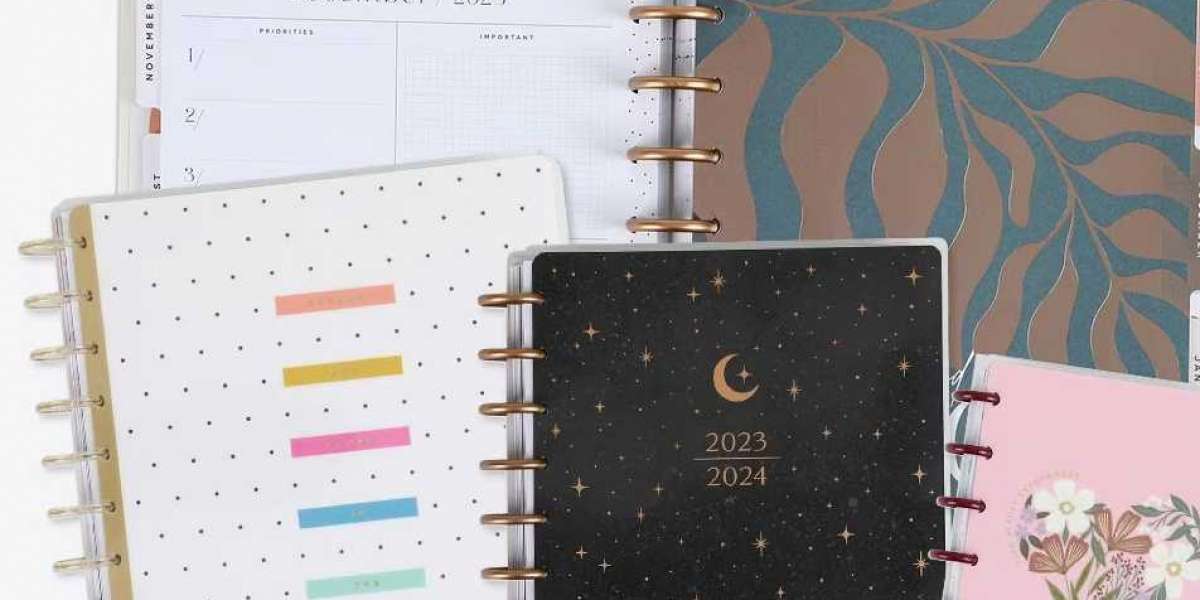Creative Ways to Organize Your Life with The Happy Planner
Organizing your life can feel overwhelming, but with the right tools, it becomes an enjoyable and fulfilling process. One such tool is The Happy Planner, a customizable and visually appealing planner designed to help you stay on top of your schedule, goals, and tasks. Whether you’re a busy professional, a student, or someone who loves creative journaling, The Happy Planner offers endless ways to organize your life effectively.
In this article, we will explore creative ways to use The Happy Planner to bring order, efficiency, and joy into your daily routine.
1. Personalize Your Planner Layout
The beauty of The Happy Planner is its flexibility and customization options. Unlike traditional planners with fixed layouts, this planner allows you to rearrange, add, and remove pages. Here’s how you can personalize it:
- Choose Your Layout: The Happy Planner comes in various layouts such as vertical, horizontal, dashboard, and hourly. Pick the one that best suits your planning style.
- Use Printable Inserts: Download and print custom pages such as meal planners, fitness trackers, or budget sheets to fit your needs.
- Decorate with Washi Tape and Stickers: Make planning fun with colorful washi tapes, themed stickers, and highlighters.
- Create Sections: Divide your planner into sections for different aspects of life—work, personal, health, and finances.
A well-organized planner is a reflection of your personality and priorities. The more personalized it is, the more motivated you’ll be to use it daily.
2. Plan Your Week with Themed Spreads
A great way to stay motivated is by creating themed weekly or monthly spreads. This technique helps to bring structure to your planning while keeping it visually appealing. Here are some creative themes you can try:
- Minimalist Theme: Stick to a monochrome or pastel color scheme with simple layouts.
- Seasonal Theme: Reflect the season with matching stickers and colors (spring florals, autumn leaves, winter snowflakes, etc.).
- Mood Tracker Theme: Incorporate mood tracking icons or color codes to track emotions throughout the week.
- Productivity Theme: Focus on time management, priority lists, and habit tracking.
- Vision Board Theme: Dedicate a section to visual inspirations, affirmations, and goal-setting images.
Adding a theme helps in making planning an exciting and rewarding ritual rather than a chore.
3. Use The Happy Planner for Goal Setting
Setting and tracking goals becomes easier when you break them down into achievable steps. The Happy Planner can be used to create a vision board, set SMART goals, and track progress. Here’s how:
- Write Down Your Goals: Use a dedicated section for yearly, monthly, and weekly goals.
- Break Goals into Actionable Steps: If your goal is to exercise more, list specific activities like “30-minute walk” or “gym session 3 times a week.”
- Track Progress: Use checkboxes or progress bars to see how far you’ve come.
- Reflect and Adjust: At the end of each week, review what worked and what needs improvement.
By documenting and tracking your goals, you stay accountable and motivated to achieve them.
4. Meal Planning and Grocery Lists
One of the most practical uses of The Happy Planner is for meal planning. Whether you’re trying to eat healthier, save money, or simplify your weekly shopping, having a meal plan makes life easier.
How to Use The Happy Planner for Meal Planning:
- Create a Weekly Meal Spread: Dedicate a section for breakfast, lunch, dinner, and snacks.
- Make a Grocery List: Write down ingredients you need for the week to avoid last-minute store runs.
- Track Nutrition Goals: If you’re following a specific diet (keto, vegan, low-carb), use stickers or notes to track your intake.
- Plan Special Occasions: If you have a dinner party or family gathering, write down meal ideas and preparation steps.
Meal planning helps in reducing food waste, saving money, and making healthier eating choices.
5. Budgeting and Expense Tracking
Keeping track of finances is crucial, and The Happy Planner can be your personal finance manager. Here’s how you can use it to manage your budget effectively:
- Monthly Budget Overview: Write down income sources and expected expenses.
- Expense Tracker: Log daily expenses to see where your money is going.
- Savings Goals: Create a savings tracker for emergency funds, vacations, or big purchases.
- Debt Payoff Tracker: If you’re paying off loans or credit card debt, monitor your progress with a debt repayment chart.
By integrating financial planning into your daily routine, you can stay in control of your spending and savings.
6. Work and Project Management
For professionals and entrepreneurs, The Happy Planner is a powerful tool for managing tasks, deadlines, and projects. You can use it to:
- Plan Daily Tasks: List top priorities and schedule meetings.
- Track Work Projects: Break big projects into smaller milestones and deadlines.
- Content Planning: If you’re a blogger or content creator, plan your content calendar in advance.
- Networking and Appointments: Keep track of client meetings, conferences, and networking events.
By organizing your work efficiently, you can boost productivity and reduce stress.
7. Self-Care and Mental Health Tracking
Life isn’t just about tasks and responsibilities—it’s also important to prioritize self-care and mental well-being. Here’s how The Happy Planner can help:
- Daily Gratitude Logs: Write down 3 things you’re grateful for each day.
- Mood and Habit Trackers: Track sleep patterns, hydration, exercise, and mental well-being.
- Journaling and Reflection: Dedicate a section for thoughts, reflections, and positive affirmations.
- Self-Care Checklist: List self-care activities like meditation, reading, spa days, or digital detoxes.
Using your planner as a wellness journal ensures that you take time for yourself amidst a busy schedule.
8. Travel Planning Made Easy
If you love traveling, The Happy Planner can help you stay organized before and during trips. Some creative travel planning ideas include:
- Packing Lists: Ensure you don’t forget essentials like passports, chargers, or medications.
- Itinerary Planning: Write down flight details, hotel bookings, and sightseeing schedules.
- Budget Planning: Set a spending limit for transportation, food, and shopping.
- Travel Memories: Use a dedicated section to journal experiences, add photos, or paste souvenirs.
A well-organized travel planner ensures a stress-free and enjoyable vacation.
Conclusion
Happy Planner is more than just a scheduling tool—it’s a creative outlet that brings structure, productivity, and joy into your life. Whether you use it for goal-setting, budgeting, self-care, or project management, this planner offers endless possibilities to organize your life in a fun and efficient way.
By incorporating some of these creative ideas into your planner routine, you can transform daily planning into a habit that enhances both productivity and personal well-being.
So, grab your Happy Planner and start organizing your life in a way that makes you happy! ?







